Clef NOTES
CELEBRATING YEARS
AT FIRSTONTARIO CONCERT HALL
(formerly Hamilton Place)
SEPTEMBER 23, 2023
GEMMA CONDUCTS SCHUMANN & MENDELSSOHN

7:30pm

FirstOntario Concert Hall
Gemma New Conductor
Tony Siqi Yun Piano

CELEBRATING YEARS
AT FIRSTONTARIO CONCERT HALL
(formerly Hamilton Place)
SEPTEMBER 23, 2023
GEMMA CONDUCTS SCHUMANN & MENDELSSOHN

7:30pm

FirstOntario Concert Hall
Gemma New Conductor
Tony Siqi Yun Piano
Verb: to stir, to encourage, or urge on to action
The incite Foundation for the Arts is a non-profit organization formed to provide funding to charitable arts organizations in the Hamilton area.


Strong cultural institutions are essential for the economic development and quality of life in any community. Hamilton’s major music, art and theatre institutions as well as the dozens of smaller arts organizations need and deserve the support of our citizens.
The incite Foundation has been funded with generous seed money from private sources. It is hoped that this initiative will incite Hamiltonians to rise to support their cultural life.
“As the soil, however fertile it might be, cannot be productive without cultivation, so the mind without culture can never produce good fruit .”
— Albert CamusStephen Sitarski, Concertmaster
Concertmaster sponsored by Robert and Ann Glass

Lance Ouellette, Associate Concertmaster
Tamara Hrycak
Cecilia Chang
Lyssa Pelton
Émilie Paré
Bethany Bergman, Principal
Suhashini Arulanandam
Elizabeth Loewen Andrews
Philip Sarabura
Chau Luk, Principal
Elspeth Thomson
Brandon Chui
Carolyn Blackwell
Viola Section sponsored by John and Anne North
Leana Rutt, Principal
Laura Jones
BASS
Robert Wolanski, Principal Principal Bass dedicated in memory of Samuel Taylor
Leslie Newman, Principal Principal Flute sponsored by Bob and Peggy Savage
Vivian Minden
Aleh Remezau, Principal
Nancy Nelson
Michele Verheul, Acting Principal
Eric Hall, Principal
Melanie Eyers
HORN
Jessie Brooks, Principal
Neil Spaulding
TRUMPET
Michael Fedyshyn, Principal
Mary Jay
Brass Section sponsored by Judith and Warren Johnson
TROMBONE
David Pell, Principal
Jean Norman Iadeluca, Principal
Sponsored by Avedis Zildjian Company, cymbal makers since 1623
Welcome to the Hamilton Philharmonic Orchestra and our 2023-24 season!
This season we are proud to welcome extraordinary Canadian and international talent to our stage performing cherished masterworks and chart-topping favourites. Known for our passion and commitment to Canadian music, we are thrilled to commission three new works by HPO Composer Fellows and support two Conductor Fellows through Tapestry Opera’s national Women in Musical Leadership Program.
Among the many highlights to come, we will be celebrating Music Director Gemma New in her final season with the HPO and honouring our home, FirstOntario Concert Hall, on its 50th birthday. In this year of celebration and discovery, we look to our future as we continue

our search for a new Music Director who will build on the artistry and commitment to music, community and education that we hold dear.

The HPO is grateful for the vital role you play as an audience member and supporter. On behalf of our musicians, staff and Board of Directors, thank you for joining us. We look forward to seeing you often in the months to come. Please sit back, relax and immerse yourself in the music.
Warmly,
Kim Varian Executive Director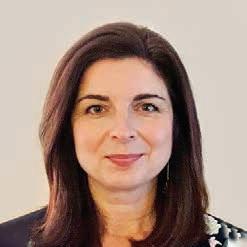
Stephen Sitarski, Concertmaster
Lyssa Pelton, Acting Associate Concertmaster
Tamara Hrycak
Cecilia Chang
Émilie Paré
Corey Gemmell
Megan Jones
Kate Unrau
Bethany Bergman, Principal
Suhashini Arulanandam
Elizabeth Loewen Andrews
Philip Sarabura
Andrew Chung
Christine Chesebrough
Laurel Mascarenhas
Jennifer Burford
Chau Luk, Principal
Elspeth Thomson
Kent Teeple
Veronica Lee
Cameron Ogilvie
Tristan Macaggi
Laura Jones, Acting Principal
Rebecca Morton
Mary Katherine Finch
Amahl Arulanandam
Robert Wolanski, Principal
Sherri Preuss
Leslie Newman, Principal
Vivian Minden
Elizabeth Eccleston, Acting Principal
Nancy Nelson
Max Christie, Acting Principal
Michele Verheul
Joshua Marshall, Acting Principal
Julie Shier
David Quackenbush, Acting Principal
Neil Spaulding
Iris Krismanic
Christine Passmore
Michael Fedyshyn, Principal
Mary Jay
Jean-Norman Iadeluca, Principal
Scherzo
Piano Concerto
I. Allegro affettuoso
II. Intermezzo

III. Allegro vivace
FELIX MENDELSSOHN
Symphony No. 3, “Scottish”

I. Introduction. Andante con moto – Allegro un poco agitato
II. Scherzo. Vivace non troppo
III. Adagio cantabile
IV. Finale guerriero. Allegro vivacissimo – Allegro maestoso assai
As artists and collaborators, we recognize and respect that music has been performed on this land for generations before this time. These are the traditional lands of the Erie, Neutral, Huron-Wendat, Haudenosaunee and Mississaugas, and within the lands protected by the “Dish with One Spoon” wampum agreement. Hamilton is now home to many diverse First Nations, Inuit and Métis peoples. We honour this land and share it in a spirit of peace, friendship and respect.
New Zealand-born Gemma New is the Music Director of the Hamilton Philharmonic Orchestra and Artistic Advisor and Principal Conductor of the New Zealand Symphony Orchestra. New is the recipient of the prestigious 2021 Sir Georg Solti Conducting Award.

Summer 2023 saw New make debuts at the BBC Proms with the BBC Scottish Symphony Orchestra and Mostly Mozart Festival at Lincoln Center, and her return to the Hollywood Bowl with the Los Angeles Philharmonic. Rounding out the season, New made Festival appearances including Chicago’s Grant Park Music Festival, Festival de la Chaise-Dieu with Orchestre National de Lyon and Opera Theatre of St. Louis, leading a production of Susannah
During the 2023/24 season, New makes subscription debuts with the London Philharmonic Orchestra, Chicago Symphony Orchestra, Los Angeles Philharmonic, Vancouver Symphony, Orchestre National de France and Bamberger Symphoniker. North
American returns include Atlanta Symphony, Seattle Symphony and Orchestre symphonique de Montréal. Continually in demand in Europe, New makes her debut with the Netherlands Philharmonic Orchestra as well as conducting the Malmö Symphony Orchestra, Orquesta Sinfónica de Barcelona y Nacional de Cataluña, Orquesta Nacional de España, Orchestre de l’Opéra de Rouen-Normandie, Orchestre National Bordeaux Aquitaine and Staatsorchester Hannover.
New previously served as Principal Guest Conductor of the Dallas Symphony Orchestra, Resident Conductor of the St. Louis Symphony Orchestra and Associate Conductor of the New Jersey Symphony. A former Dudamel Conducting Fellow with the Los Angeles Philharmonic and Conducting Fellow at Tanglewood Music Center, she was awarded Solti Foundation U.S. Career Assistance Awards in 2017, 2019 and 2020, before receiving the 2021 Sir Georg Solti Conducting Award.

Tony Siqi Yun, Piano
Following his highly acclaimed subscription debut with the Philadelphia Orchestra performing Robert Schumann’s Piano Concerto under the baton of Yannick Nézet-Séguin in the 2022/23 season, the Canadian-born pianist Tony Siqi Yun makes his subscription debut at Carnegie Hall in 2023/24 with Yannick Nézet-Séguin and Orchestre Métropolitain performing Rachmaninov’s Second Piano Concerto. He first met Maestro Nézet-Séguin in the final round of the inaugural China International Music Competition in 2019, where he went on to win First Prize and a Gold Medal performing Tchaikovsky’s First Piano Concerto. Other recent concerto performances include the Cleveland Orchestra (Tchaikovsky), Toronto Symphony and Orchestre Métropolitain in Montreal (Clara Schumann) and the Orchestre de chambre de Paris (Beethoven).
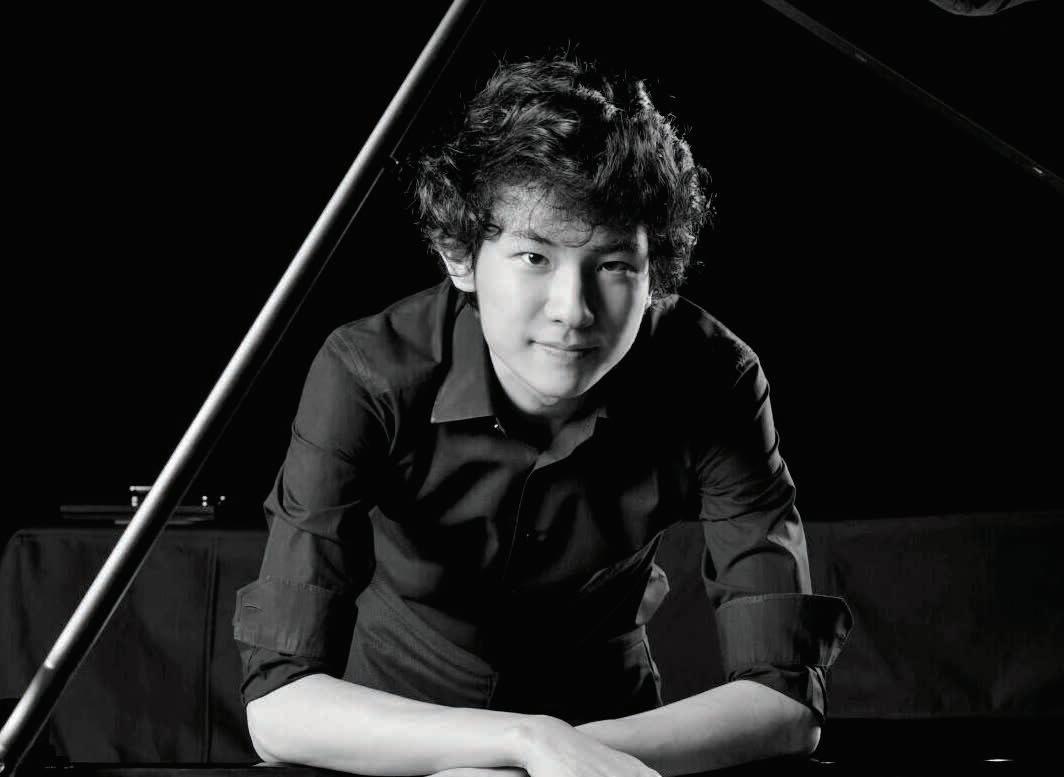
Tony regularly performs solo recitals in both Europe and North America. Recent and future highlights include his debuts at the Hamburg Elbphilharmonie, Gewandhaus in Leipzig, Düsseldorf, Luxembourg and in North America the Vancouver Recital Society, Stanford Live and Gilmore Rising Stars Series. At the Kissinger KlavierOlymp in 2022, he was awarded two prizes.
Tony has a long-standing relationship with the China Philharmonic Orchestra, touring and appearing as a soloist in the 2019 CCT New Year’s Concert. He has also performed with the Shanghai Symphony Orchestra.
He is a recipient of the Jerome L. Greene Fellowship at the Juilliard School where he studies with Professors Yoheved Kaplinsky and Matti Raekallio.
Jennifer Tung, Assistant Conductor*

*Appears courtesy of Tapestry Opera’s Women in Musical Leadership Program
A Dora-nominated conductor (Gould’s Wall), Jennifer Tung is the Artistic Director of Toronto City Opera and Assistant Conductor of the Mississauga Symphony Orchestra. She leads a uniquely versatile career as Music Director, collaborative pianist and soprano. In 2020/21, she joined Tapestry Opera as a conducting fellow in the inaugural year of the Women in Musical Leadership program.
Jennifer debuted with the Hawaii Performing Arts Festival conducting The Mikado in 2017 and has returned to conduct Sweeney Todd and Tragedy of Carmen . In 2019, she debuted with Opera York in La Traviata . She assisted Tapestry Opera and Opera on the Avalon’s joint production of the
Dora Award-winning opera Shanawdithit by Dean Burry and Yvette Nolan. Recently, she conducted the world premiere of Gould’s Wall by Brian Current and Liza Balken, a joint production with the Royal Conservatory of Music and Tapestry Opera.
For the 2022/23 season, she has debuted as guest conductor with Opera McGill’s production of Plaything (Anna Pigorna/Maria Reva – Canadian premiere), Okanagan Symphony Orchestra, Calgary Philharmonic and Kamloops Symphony. In March of 2023, Jennifer will conduct the world premieres of Continuum’s production of the opera Show Room (Rodney Sharman/Atom Egoyan) as well as Tapestry Opera/Obsidian Theatre’s co-production of Of the Sea (Ian Cusson/ Kanika Ambrose).
Women in Musical Leadership (WML) is a three-year program designed to develop the next generation of women and non-binary conductors and music directors in Canada. Led by Tapestry Opera with lead orchestral partner Toronto Symphony Orchestra and lead partner Pacific Opera Victoria, the program addresses a historic gender inequity on the podium by providing women and non-binary conductors active mentorship with leading conductors in the field, deep and varied experience with professional companies, and a robust artistic network. The Hamilton Philharmonic Orchestra is a proud mentor orchestra of this program.
Hamilton Place, now known as FirstOntario Concert Hall, opened to the public on September 22, 1973 with the first night of a month-long festival celebrating the monumental occasion. Hamilton Place was a years-in-the-making project that residents, the arts community, businesses and City Hall rallied behind to make the idea a reality. Since 1973, countless artists have performed on the stages of the Great Hall and The Studio, contributing to building a cultural hub in the heart of the city.
In 1957, Mayor Lloyd D. Jackson formed a committee of City Hall representatives and private citizens to determine the community’s needs for a new arts centre, its location, and the financial and operational plans.
In the 1960s, the Theatre-Auditorium Foundation was established to raise the needed funds from residents and businesses to make the project a reality.

At the time, Hamilton was well-known for its steel industry and not much else. In fact, The Globe and Mail called Hamilton “the lunch bucket city” when the building was first announced! This blue-collar image prompted genuine surprise in media reports in the late ‘60s and early ‘70s about the community effort to make a multi-use performing arts building happen.

Employees and union leaders organized payroll deductions at several Hamilton
businesses including Stelco, Dofasco, Otis Elevator Company and the G.W. Robinson Co. department store. This marked the first time that payroll deduction fundraising was done for the arts in North America.
Through workplace fundraising and the sale of shares and bonds to community members, the citizens of Hamilton contributed $2.5 million ($16.5 million today) of the building’s $10 million price tag.
Hamilton-based architect Trevor GarwoodJones was selected to design the building and the City hired world-renowned acoustician Russell Johnson to ensure the Concert Hall would provide exceptional sound. The first building sketch was released in 1969 and construction began on October 29, 1970, with local company Frid Construction.

In 1971, a debate arose over the type of bricks that would be used. Garwood-Jones
and Johnson agreed that Ohio-made bricks would be the best acoustic choice for the inside of the Great Hall, but some members of City Council felt the project should support the then-hurting Canadian industry. After tense debates and money spent on testing the qualities of each brick, the experts won, and Ohio-made bricks line the walls of the Great Hall. Canadian bricks (some 500,000 of them) were used for the exterior of the building.
The late Boris Brott conducted the HPO on the first night of the 30-day celebratory opening festival, September 22, 1973. The orchestra performed Louis Applebaum’s Place Setting, A Celebration for the Opening of Hamilton Place , which was commissioned for the occasion. “It had a sense of occasion and it brought out some of the best in both the
orchestra and hall,” reviewer John Kraglund wrote for The Globe and Mail about the piece. Hundreds of performers participated in the opening festival, including the Dofasco Male Chorus, Bach Elgar Choir, National Ballet of Canada, Toronto Dance Theatre, many of Hamilton’s cultural groups and international performers like the late Tony Bennett!
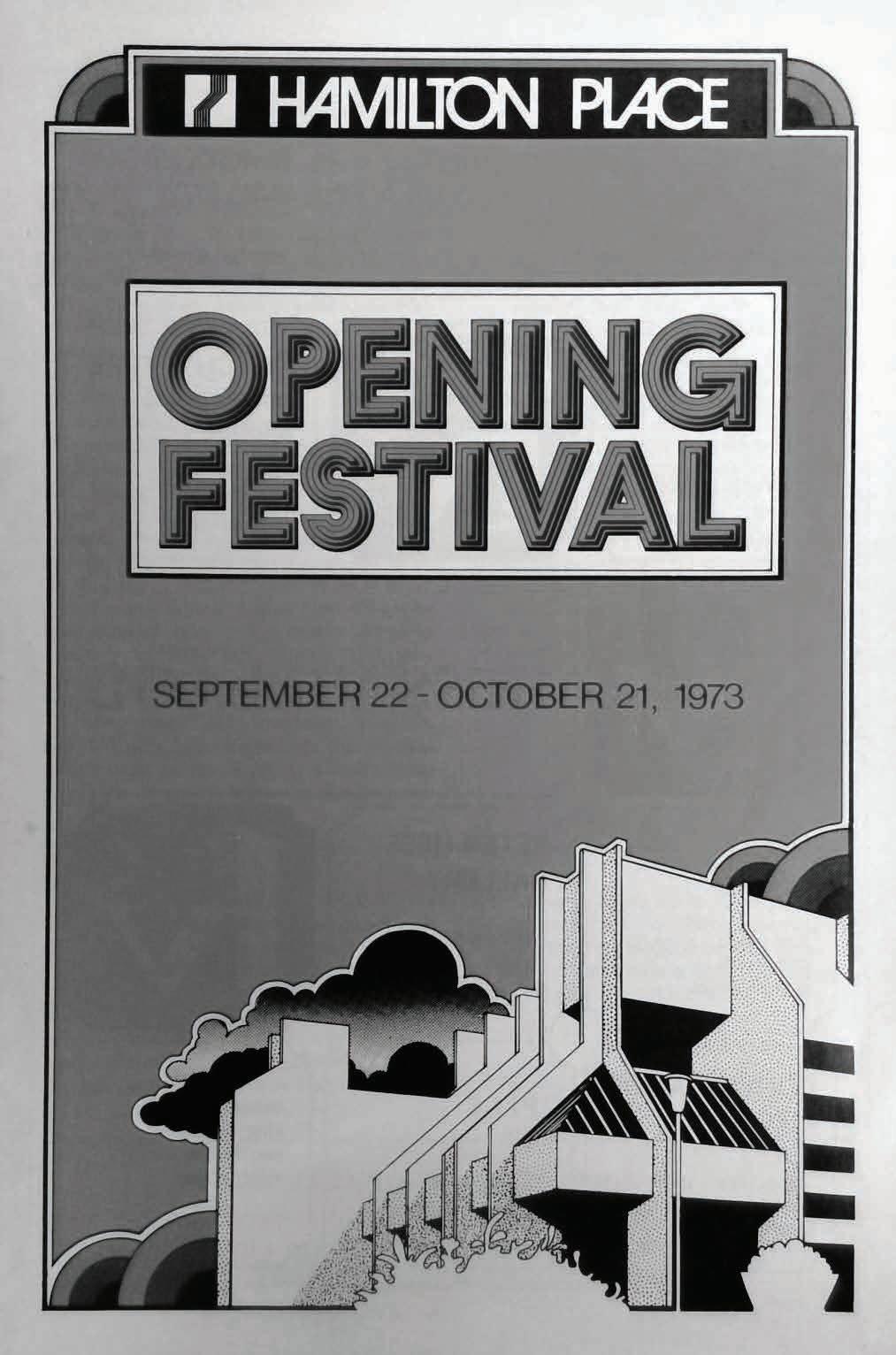
Born June 15, 1996, in Hamilton, Ontario
This work has its world premiere tonight with the Hamilton Philharmonic Orchestra with Conductor Gemma New. It is scored for pairs of woodwinds, horns and trumpets, with timpani and strings.
In celebration of Ludwig van Beethoven’s 250th birthday, I was commissioned by Canadian-conductor Justin Pambianchi to write a new work to be presented during a cycle of Beethoven’s five piano concertos. Taking this theme into consideration, I decided to centre my piece around one of my personal favourite elements of Beethoven’s work – the scherzos from his symphonies.
In writing my own Scherzo , my approach was to not only highlight the traditional structural elements of this form (A-B-A), but to also allude to some famously Beethovenian musical features. There are references to his musical language scattered throughout the piece, including distant horn calls, abrupt interjections, repetitious use of melodic fragments, and distinct rhythmic motifs that could easily be found within Beethoven’s own work.
Traditionally, a scherzo (from the Italian word, meaning “joke” or “jest”) is characterized as being light, playful and usually quite fast. However, within my own interpretation of this musical form, the “joke” of my scherzo is that it begins incredibly slow and lugubrious. As the piece progresses, the momentum gradually builds, and the distinct Beethovenian elements become increasingly prominent, eventually bursting to the forefront of the musical landscape.
The commissioning of this work was generously supported by the Canada Council for the Arts.
Program Notes provided by Liam Ritz
Born June 8, 1810, in Zwickau, Saxony, Germany
Died July 29, 1856, in Endenich, near Bonn, Germany
This work premiered on December 4, 1845, in Dresden, with Ferdinand Hiller conducting and Clara Schumann as soloist. It is scored for pairs of woodwinds, horns and trumpets, with timpani and strings.
Composer Robert Schumann died in an insane asylum, although some would believe that he belonged there from the beginning. Since he was a teenager, he had an irrational fear of going mad, probably because his father and sister suffered mental disorders, which led to the latter’s suicide at 19. His music often dealt with such subjects, including his song cycle Dichterliebe , in which the singer’s persona skirts the boundaries of madness. As publisher and critic for the Neue Zeitschrift für Musik (New Musical Times) , he wrote under three pseudonyms – Eusebius, the proponent of good taste; Florestan, an eager student who was “in a state of flowering;” and Raro, who related his controversial opinions. Schumann was a composer afraid of insanity, who often wrote on that very subject, and who published writings from his multiple personalities.
Schumann left an unsuccessful stint as a student of law at the University of Leipzig in 1828 and began piano lessons with Friedrich Wieck. After a short break the following year, Schumann took a room in the teacher’s home and attempted to become a virtuoso pianist. Despite an almost debilitating anxiety problem, the 25-year-old man found strength in one
thing – his obsessive love for Wieck’s 16-yearold daughter, Clara. Naturally, Wieck objected to this unstable young man’s unnatural obsession with his underage daughter, but Schumann persevered to the point of taking Wieck to court in order to marry Clara. In what must have been an infuriating gesture, the couple wed on September 12, 1840 – one day before her 21st birthday. It was a long marriage with many trials, the most extreme of which was Schumann’s attempted suicide by jumping into the Rhine at Düsseldorf in the winter of 1854. Five days later, he committed himself to an institution where Clara was not permitted to visit. A family friend who Schumann had discovered a few years before, Johannes Brahms, moved in as a long-term houseguest to help Clara with the seven children, one of whom developed a mental disorder in later years.
Despite numerous personal problems, Schumann was one of the most original compositional voices to emerge in the 19th century. His numerous lieder and chamber works are among the most revered and his symphonic works nearly all remain in the orchestral repertoire. However, it was his many pieces for the piano that brought him the most recognition in his lifetime. Clara was his tireless champion, often promoting his music in performance. She continued to champion Robert’s works until her death in 1896.
One of the pieces she performed on a regular basis was his Piano Concerto. Begun eight months after their wedding as a Fantasy, Robert continued to labour over the piece until he decided four years later to expand it into a full-length concerto with the original Fantasy as the first movement. This piece does not just concentrate on flashy virtuosic writing – it is monstrously difficult even though that aspect is not always apparent. The work opens with a rhythmic piano flourish, giving way to a pensive oboe solo, which provides the motto from which the work sprouts. Of note is the inventive development section, which journeys to
remote keys and provides considerable unrest to the proceedings. Schumann’s climactic cadenza is written out as part of the published score, not allowing the practice of including performer-composed cadenzas, as was common practice only a few decades before this work was written.
Bearing the marking Intermezzo: Andantino grazioso , the second movement is a leisurely excursion through long and lyrical melodies with the piano providing interjections along the way. Near the end of the movement, clarinet and bassoon reprise material from the opening of the concerto. This provides a seamless transition to the finale, which begins without pause. Brilliant and waltz-like, the syncopated last movement is filled with the type of effervescent piano writing, tinged with moments of melancholy, which has endeared listeners and performers to Robert Schumann’s music for a century and a half.
©2023 Orpheus Music Prose & Craig Doolin
FELIX MENDELSSOHN
Symphony No. 3 in A minor, Op. 56 (Scottish)
Born February 3, 1809, in Hamburg, Germany
Died November 4, 1847, in Leipzig, Germany
This work was first performed on March 3, 1842, by the Gewandhaus Orchestra of Leipzig with the composer conducting. It is scored for pairs of flutes, oboes, clarinets, bassoons, four horns,
trumpets, with added timpani and the customary strings.
Much attention is given to the remarkably young age at which Mozart composed his earliest works. This has overshadowed the equally amazing talents of the young Felix Mendelssohn. Mozart was forced to tour Europe as a young child, playing for kings, popes and princes. Mendelssohn showed his talent at a similarly young age, so his banker father invested in the best music teachers available for Felix and his musically gifted sister Fanny (who also became a composer of mostly salon music even after marriage, despite the social expectations of the time). As the young Felix composed, he regularly heard his music performed by a private orchestra that played in the Mendelssohns’ Berlin home every Sunday. This invaluable advantage allowed the composer to develop musical identity and adeptness for orchestration before his age reached double digits. 13 early “string symphonies” date from this period – all written before he composed his first numbered symphony at the age of 15.
Felix’s thirst for travel was nearly as great as his love of composition. In fact, he regularly chronicled his journeys in his works. Mendelssohn’s visit to the British Isles in 1829, one of 10 such trips, resulted in the Hebrides (Fingal’s Cave) Overture and the Scottish Symphony . Where the overture reflects Mendelssohn’s impression of a specific grotto, the Scottish Symphony is based more on the composer’s recollection of the journey almost a dozen years after it happened.
The opening of the introduction, while not attempting to depict the scene, was inspired by a visit to Holyrood Castle, where Mary, Queen of Scots, was crowned. Mendelssohn wrote to his family: “In the deep twilight we went to the palace where Queen Mary lived and loved... The adjoining chapel is now
roofless; grass and ivy grow abundantly in it; and before the ruined altar, Mary was crowned Queen of Scotland. Everything around is broken and mouldering, and the bright sky shines in. I believe I found the beginning of my Scottish Symphony there today.”
The short melody he sketched at the ruins appears in the introduction. No actual folk material or Scottish songs appear in the work, but there are occasional stylized melodies that capture some of the Scottish style, and occasional bagpipe-like drones occur. The Third Symphony, the fifth in order of composition but third in publication order, was dedicated to “H.M. Queen Victoria of Great Britain and Ireland.”
After the stately introduction, the Allegro begins with the principal theme in the violins. Mendelssohn derives both themes of this movement from material in the introduction. Foregoing the customary pause between movements, the first movement flows directly into the second – a practice that connects all movements of this work. The bubbly Vivace non troppo assumes the role of a symphonic scherzo but is cast in sonata form. Mendelssohn makes extensive use of the so-called “Scotch snap” – a rhythmic figure consisting of two accented notes, the first very short followed by a longer one.
The Adagio is contemplative with much emphasis on the string ensemble. It has been suggested by several writers that this touching movement might represent the final prayer of Queen Mary. The Finale is full of turmoil with numerous themes organized in a complicated web of a development section. Near the end, the same instruments that played the opening theme of the introduction return to play a final hymn-like melody derived from the opening material, but this time transformed to the bright key of A major.

HPO 35 & Under subscriptions and ticket pricing provide accessible ways for people ages 18-35 to experience live orchestral music in Hamilton.
Join us for your choice of 3 or 6 concerts or sign up for our 35 & Under email list to receive exclusive offers on tickets to select concerts.
LEARN MORE AND SUBSCRIBE AT HPO.ORG

GOVERNMENT FUNDERS
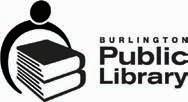


SEASON PRESENTER
PROGRAM SPONSORS


















DESIGN FIRM
Darrell Leighton, Art Director
L8TON Design
HOUSE PROGRAM PRINTING
Contact Creative

The HPO partners with local non-profits providing valuable services that help make our city great. We are thankful for all their hard work and contributions to life, culture and the arts in Hamilton. To show our appreciation, our HPO Gives Back program provides volunteers with complimentary tickets to our concerts so they can experience the magic of live symphonic music in their city.
Supercrawl showcases our community’s cultural vibrancy and eclectic arts landscape, bringing thousands of people into downtown Hamilton. Enthusiastic volunteers are essential to making this free event happen and a vital part of the festival’s ongoing success. We thank all Supercrawl volunteers for their role in highlighting the incredible arts scene that Hamilton has to offer.
The HPO extends its deepest thanks to the individuals and companies whose generous support we rely on to bring the Hamilton region the best in professional orchestral music. Your gifts help unite our community through music. Gifts of $100 or more receive recognition in the HPO Concert Program. Sincere thanks are offered to the following donors whose support was received September 1, 2022 to September 1, 2023.
Visionary : $15,000 +
Bob and Maggie Carr
Alan and Marlies Clark Family Fund at Hamilton Community Foundation
Estate of Lilojean Frid
incite Foundation for the Arts
Dr. and Mrs. Harvey and Mona Levenstein
Turkstra Family
Benefactor: $10,000 to $14,999
Clark Family Foundation at Hamilton Community Foundation
John and Elizabeth Heersink
Audrey and Alan Moffett Fund at Hamilton Community Foundation
Bob and Peggy Savage Foundation
Edith Turner Foundation at Hamilton Community Foundation
Patron: $5,000 to $9,999
Adam and Olive Clark Memorial Fund at Hamilton Community Foundation
Mildred Dixon Holmes at Hamilton Community Foundation
Bob and Ann Glass
Brenda Kerr and Karen Trebilcock
Milne McGrath Fund at Hamilton Community Foundation
Schwenger Family Foundation
Sam Taylor Family
Applause: $2,500 to $4,999
Martin and Sheelah Dooley
Judy and David Goodings
Dr. Peter Macdonald
Judith McCulloch and Richard Bethune
Gemma New
Dermot and Tam Nolan
James and Louise Stokes
Dr. Michael Taylor
Robin Taylor
Lise Wehrle-Swartz
Doug and Debbie Welland
Leader: $1,000 to $2,499
Dennis and Patricia Baker
Doug and June Barber
Rita and Tony Cipriani
David and Dianne Conrath
Jean Crowe
Ellaline Davies
Dawn Davis and David Harris
Kevin and Karen Dore
Sarah and Matt Goodman
Harbinger Foundation
Dr. Joan B. Heels
John and Anne Hibbs
Derek Hrynyshyn and Stephanie Ross
Wesley and Luisa Jamieson
Judith and Warren Johnson
Karyn Kaufman
Julia Kinar
Mrs. Louise Kot
Colleen and Larry Kurtz
Stephen Lloyd and Anne Boyle
Janice and Jim Locke
Alex Muggah
John Naismith
Lenora Newman
Abigail Richardson-Schulte and Michael Schulte
Dr. and Mrs. Michael and Mary Romeo
Ashok and Suman Sharma
Storjohann Family
Laurel Trainor and Taras Babiak
Diana Weir and Dr. Mathew Mercuri
Henk Wondergem
Ambassador: $500 to $999
Alberici Constructors, Ltd.
Jan and Gary Boomgaardt
Dennis and Jacqueline Carson
Mike Colyer
Warren and Jean Currie
Mike DeVillaer
Dr. Patricia Fink and Mr. Michael O’Neill
Lydia Garland
Erica Giese
Barbara Hindrichs and David Willms
James and Jean Keenleyside
Carolyn Kinsley
Miriam Kramer
Ananth Kumar
Janet E. Long
Shirley MacDougall
Janice M. Muirhead
Neil Spaulding
Anne Tennier
Ruth Todd
Paul and Kim Varian
Dan Yuzwa
Supporter: $250 to $499
Callie Archer
Susan Barton-Tait and Robert Tait
Heather Beale
L Haynes
Sandra Black
Scott Brooks
Margaret Cunningham
Tom Flemming
Kerr and Alison Gibson
Dr. William and Lynn Hryniuk
Cheryl Main
Nancy Martin
Don and Karen McClellan
Peter and Beverley Mitchell
Joyce Neal
Anne and John North
Anita and Yu Peng
Ron Pesowsky
Shirley Picken
Beverly and Robert Shepard
Ruth Simmons
Bill and Cynthia Wilkinson
Lyre Music - Danuse L. Vrba
Friend: $100 to $249
Stanley Alama and Lia Bronsard
Chris Allan
Marilyn Bar-Or
Patricia G. Barton
Margaret Beale
Alain Beaudin and Jennifer Bonner
Elizabeth Beckett
John and Donna Bellsmith
Robert and Susan Bowman
Donald Bradford
Jennifer Brasch and Kirt Cushnie
Rowena Broad
Ruth Brooks
Donald and Ruth Burney
Joyce and Rick Butler
Janet E. Cannon
Anne Childs
Maggie Collins
Ken Cruikshank
Catherine Demers
Sonja DePauw and Dave Morgan
Pat and Roy Dickinson
Ronald Dunn
Peter and Valerie Elton
Lise and Harvey Feit
Dave and Elsa Ferguson
Pat Chow-Fraser and Noel Fraser
Dr. Irwin and Mrs. Sandra Fuss
Greg Gill
Erica Goodman
Susan Hill and Ron Barrett
Ruth Holloway
Michael Holmes
Sebastien Hotte and Kathryn Webert
Barbara Howard
Mary Anita Hritzun
Ann and Roger Ivol
Mirdza Jaunzemis
Ms. Catherine Jeanes
James Johnson
Dorothy Jolliffe
Carol Kehoe
Emma Keoghan and Anton Ryan
Katharine R Kingsmill
Paul Lakin
Winston and Suzanne Lindsay
Michael Macky
MaryEllen Maniaci
Peter Mascher and Doris Stevanovic
James J McCracken
Doreen McGahey
Gordon and Angie McNulty
Anita Millman
Dr. B. Millman
Michael Milne
Douglas Gordon Morton
Rebecca Morton
Brenda O’Connor
Elizabeth and Diana
Michael Patterson
Deborah Peace
David and Mary Ann Pearson
Elizabeth Petch
Kathy Pfeiffer
Port Nelson United Church Choir Fridays
Lori Regenstreif
Robert Rivers and Nan Rivers
Laura Robertson
Kelly Rowe
Anna Schantz
Michael and Sabine
Vicki Scott
The Senior Family
Eric and Edna Subesa
Leslie and Julianna Szoke
Patricia Tarbutt
Paul Jerome Taylor
Angela Tiberi
Bin Bing Wang
Glenn Welbourn
Boris Williams and Sunniva Buskermolen
Kathleen and Don Baba Willison
Lisa J. Willms
Thomas Willms
Christine Wilson
Donald and Jennifer Wray
Anonymous (22)
Veronica Barnes
Diana Emery
Volkmar Hindrichs
Ann Howard
Thomas and Mary Kinar
Francis and Gordon Lovett
Eric Medhurst
Florence Pearson
Maggie Carr
Jean Norman ladeluca
Carolyn Kinsley
Deferred or realized gifts through bequests, life insurance policies, property or charitable annuity.
Callie Archer
The Estate of Margaret Banfield
Richard Bull
Bob and Maggie Carr Fund
The Estate of Cornelia Maria Groep
Carol Kehoe
Julia Kinar
Felice Martinello
Estate of Jane Neysmith
Molly and Mary Proctor Fund
Hamilton Philharmonic Orchestra is a not-for-profit corporation and a registered charitable organization. CHARITABLE REGISTRATION NUMBER 89043 0093 RR0001
For more information on estate or other gifts please contact Executive Director Kim Varian at 905-526-1677 x 227. The HPO greatly values its donors, and we apologize if we have inadvertently omitted your name. Please contact Lorna Zaremba at 905-526-1677 x226 or lzaremba@hpo.org so we can make any required corrections.


Staff and Board of Directors, 23-24
BOARD OF DIRECTORS OFFICERS
Heather Beale, Chair
Tony Cipriani, Vice Chair
Cam Beatty, Treasurer
Alex Muggah, Secretary
DIRECTORS
Harwant Garland
Wesley Jamieson
Steve Lloyd
Trish Loomis
Dan MacKay
Dermot Nolan
Spencer Russell
Michael Salvatori
Ashok Sharma
Jennifer Tang
Laurel Trainor
EX-OFFICIO
Michael Fedyshyn, Players’ Rep
Laura Jones, Players’ Rep
Kim Varian, Executive Director
MUSIC DIRECTOR
Gemma New
EXECUTIVE DIRECTOR
Kim Varian
COMPOSER-INRESIDENCE
Abigail Richardson-Schulte
HPYO MUSIC DIRECTOR
David Willms
ARTISTIC ADMINISTRATION AND OPERATIONS
ARTISTIC OPERATIONS MANAGER
Neil Spaulding
PERSONNEL MANAGER
Elizabeth Loewen Andrews
LIBRARIAN
Elspeth Thomson
ASSISTANT LIBRARIAN
Laura Jones
ARTISTIC ADMINISTRATOR
Jennifer Stephen
DEVELOPMENT, COMMUNICATIONS AND EDUCATION
PATRON SERVICES MANAGER
Heather Hollis
DIRECTOR OF DONOR EXPERIENCE
Lorna Zaremba
COMMUNITY ENGAGEMENT MANAGER
Megan Nourse
MARKETING AND COMMUNICATIONS MANAGER
Varinder Nandhra
MARKETING AND COMMUNICATIONS COORDINATOR
Kyla Lacroix Bardsley
MUSIC EDUCATION AND HPYO MANAGER
Megan Benjafield
ADMINISTRATION AND FINANCE
OFFICE ADMINISTRATOR
Gerry Custeau
BOOKKEEPER
Sue Pollon
IT SUPPORT IT Force
FIRSTONTARIO CONCERT HALL STAGE CREW
MEMBERS OF IATSE: LOCAL 129
James Langham, Stage Manager
Greg Kott
Mike Stewart
Brad Stewart
HAMILTON MUSICIANS’ GUILD
Members of LOCAL 293
The Hamilton Philharmonic Orchestra condemns all forms of hate including racism, discrimination and violence of any kind. We recognize our responsibility to ensure our event spaces are welcoming and safe for all members of our community regardless of age, background, skin colour, religion, ability and gender identity.
SATURDAY, OCTOBER 21, 2023
FirstOntario Concert Hall
James Kahane, Conductor Aleh Remezau, Oboe
Join the orchestra in an exploration of musical friendships. Britten’s Variations on a Theme of Frank Bridge honours the composer’s mentor and Elgar’s Enigma Variations shares a series of musical sketches inspired by those closest to him. HPO Principal Oboe Aleh Remezau takes centre stage as soloist in Vaughan Williams’ Oboe Concerto.

Enrich your musical experience with HPO Talk & Tea!

Join us for a hot drink and treats, a sneak peek at rehearsals and a deep dive into music history with our Composer-inResidence Abigail Richardson-Schulte the Friday before our masterworks concerts.
VISIT HPO.ORG TO PURCHASE TICKETS OR A SUBSCRIPTION PACKAGE FOR OUR 23-24 TALK & TEA EVENTS.
Some older adults wish to attend an HPO concert but face barriers including social isolation, physical or financial limitations. Seniors Connect is a program that provides a friendly and supportive environment for older adults to join their peers at select HPO mainstage concerts at FirstOntario Concert Hall. Tickets can be provided to participants with financial barriers and transportation arrangements are available. Participants and volunteers meet before concerts for light refreshments and conversation before watching the performance together.
IF YOU KNOW SOMEONE WHO WOULD BENEFIT FROM THIS PROGRAM, PLEASE CONTACT OUR COMMUNITY ENGAGEMENT MANAGER AT MNOURSE@HPO.ORG.

Our 23-24 season is Gemma New’s ninth and final year as HPO’s Music Director and we are deeply honoured to have shared nearly a decade together growing the orchestra in size and stature.
Gemma’s commitment to artistic excellence and passion for the orchestra’s role in the community has been evident in her programming and performances at the HPO. During her tenure, Gemma has grown the HPO artistically, expanded the number of core musicians and developed programs to include more contemporary music, especially highlighting Canadian talent.
Under her leadership, she initiated the Intimate & Immersive new music series, supported our Conductor and Composer Fellowship programs and welcomed superb Canadian soloists to Hamilton.

Gemma has also deepened the HPO’s education and community collaborations with Hamilton-based organizations such as the Bach Elgar Choir, Hamilton Children’s Choir, Supercrawl, The Hamilton Music Collective and McMaster University.
“Gemma is one of the finest conductors that I’ve had the honour and pleasure to have collaborated with in my career,” says HPO Concertmaster Stephen Sitarski. “She has a rare combination of intellect and passion, with a true understanding of how to obtain excellent performances.”
We will cherish this last season with Gemma, and we look forward to her returning to Hamilton as a dear friend and guest conductor of the HPO for many years to come.
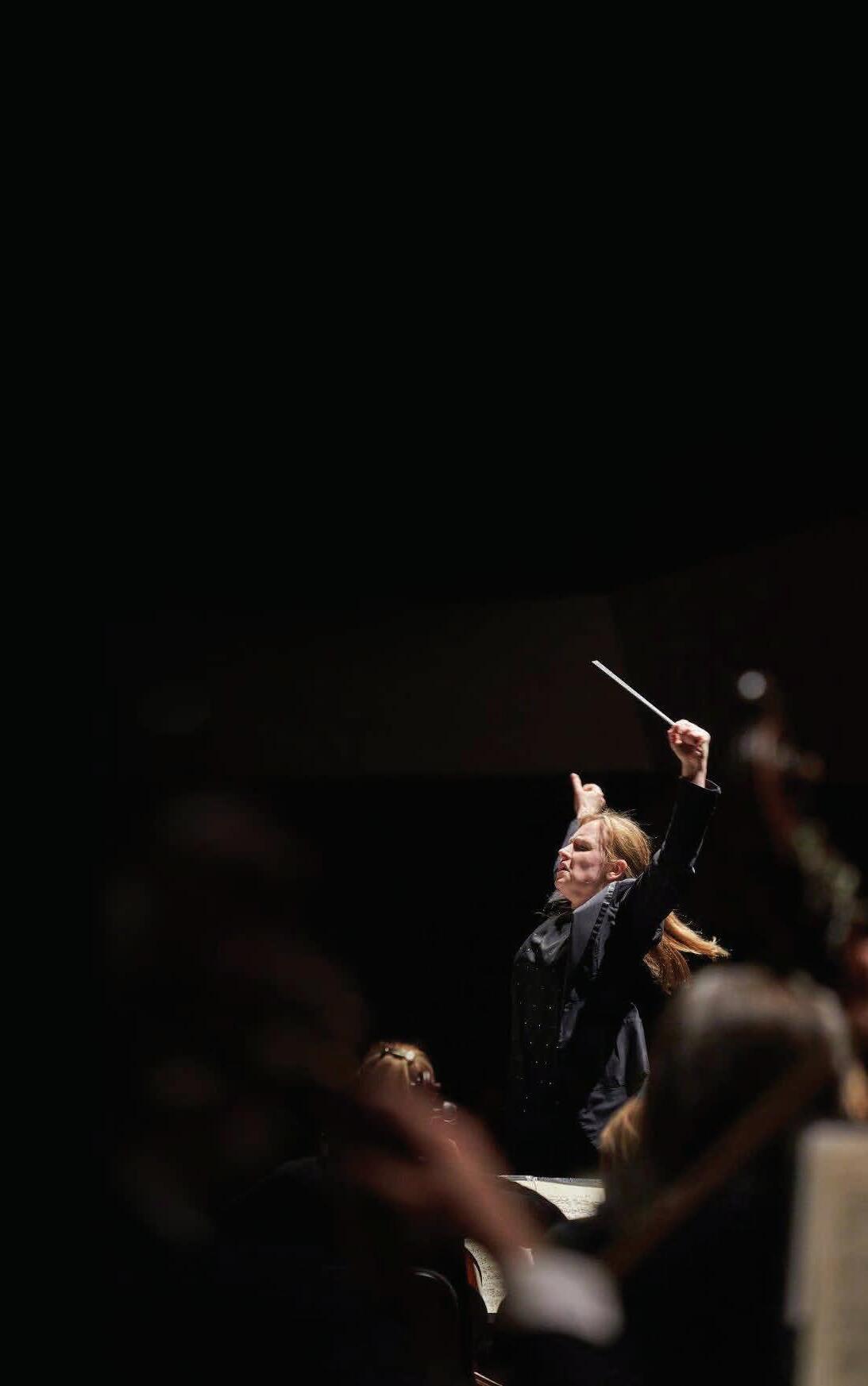

VISIT HPO.ORG

TO SUBSCRIBE TO OUR SEASON WITH A 3, 5, OR 7-CONCERT PACKAGE!
BRITTEN, VAUGHAN
WILLIAMS & ELGAR
OCTOBER 21, 2023 AT 7:30PM
SIBELIUS & DVOŘÁK
NOVEMBER 11, 2023 AT 7:30PM
HOLIDAYS & THE HOCKEY

SWEATER
DECEMBER 9, 2023 AT 3:00PM
THE MUSIC OF QUEEN
JANUARY 20, 2024 AT 7:30PM
MOZART, STRAUSS & EVANGELISTA
FEBRUARY 10, 2024 AT 3:00PM

BARBER, RAUM & COPLAND
MARCH 23, 2024 AT 7:30PM

RACHMANINOFF & TCHAIKOVSKY
APRIL 20, 2024 AT 7:30PM
GEMMA CONDUCTS BEETHOVEN 9


MAY 4, 2024 AT 7:30PM
